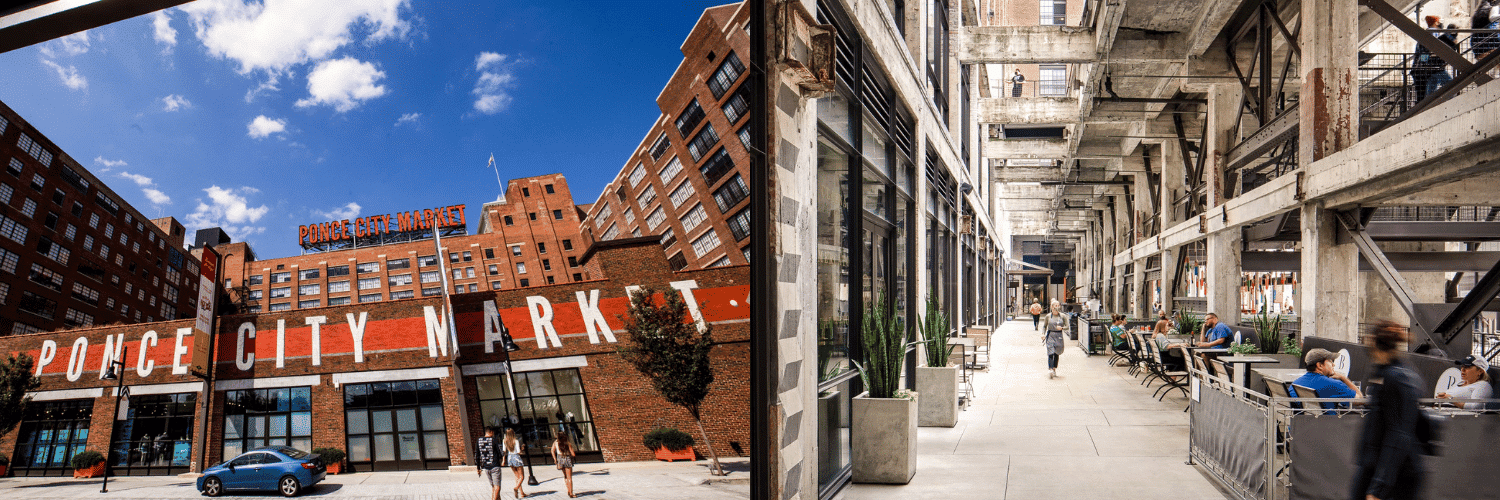

Adaptive Reuse Projects: Breathing New Life Into Old Buildings
In cities across the country, developers are finding creative ways to repurpose aging commercial properties instead of demolishing them. These “adaptive reuse” projects take old office buildings, factories, schools, and other structures and reimagine them for new purposes like housing, retail, or mixed-use spaces. While tackling an adaptive reuse project comes with unique challenges, the rewards can be plentiful for both developers and communities.
Innovative Adaptive Reuse Examples
- Ponce City Market (Atlanta, GA) – This massive 2.1 million square foot mixed-use development converted the former Sears, Roebuck & Co. retail store and warehouse into loft office spaces, retail stores, restaurants, and residential flats. The project maintained many original details like the building’s exterior art deco design.

- Krog Street Market (Atlanta, GA) – An abandoned 1920s warehouse along the BeltLine trail was transformed into a vibrant food hall and retail plaza with a landscaped pedestrian trail on the roof. Repurposing the historic building kicked off revitalization of the entire area.

- Cornell Mills (Boston, MA) – This apartment and retail complex reimagined a 19th century textile mill into modern loft-style living spaces while preserving architectural artifacts like wooden beams, brick facades, and massive factory windows.

Challenges of Adaptive Reuse
While starting fresh with new construction allows a blank slate, retrofitting older structures for new uses requires careful planning and overcoming hurdles such as:
- Aging infrastructure and materials like plumbing, electrical, HVAC systems
- Code compliance with modern regulations for fire safety, accessibility, energy efficiency
- Structural issues from years of deferred maintenance
- Environmental issues like asbestos, lead paint, or contaminated soil
- Preserving historic architectural elements to maintain character
Benefits of Building Reuse
Despite the added complexities, many developers are embracing adaptive reuse projects thanks to benefits like:
- Reducing landfill waste from demolition
- Repurposing embodied energy already used to construct the original building
- Renovating is often more cost-effective than new construction
- Preserving community heritage and character
- Qualifying for tax credits for rehabilitating historic properties
- Meeting urban infill and sustainability goals

As cities look to revitalize older neighborhoods and industrial areas, thoughtful adaptive reuse allows new life to be breathed into vacant buildings. With creativity and careful planning, today’s developers can merge historic charm with modern functionality.
Looking to tackle an adaptive reuse project? The team at North Star Commercial Real Estate Advisors has extensive experience guiding clients through complex redevelopment projects. Contact us today to discuss how we can help bring your unique vision to life.
Disclaimer: The information provided in this article is for educational purposes only and should not be considered financial or investment advice. It is always recommended to consult with a qualified financial advisor or investment professional before making any investment decisions.

